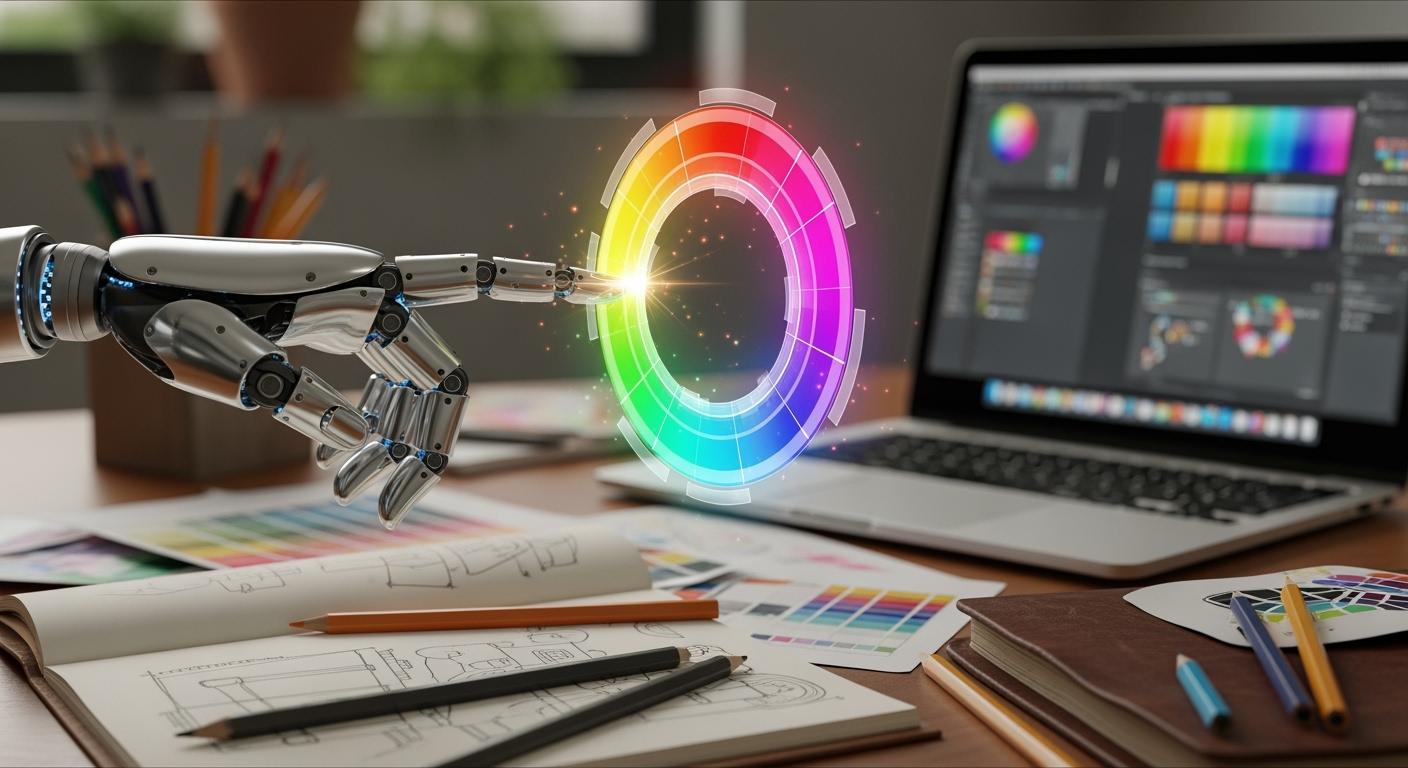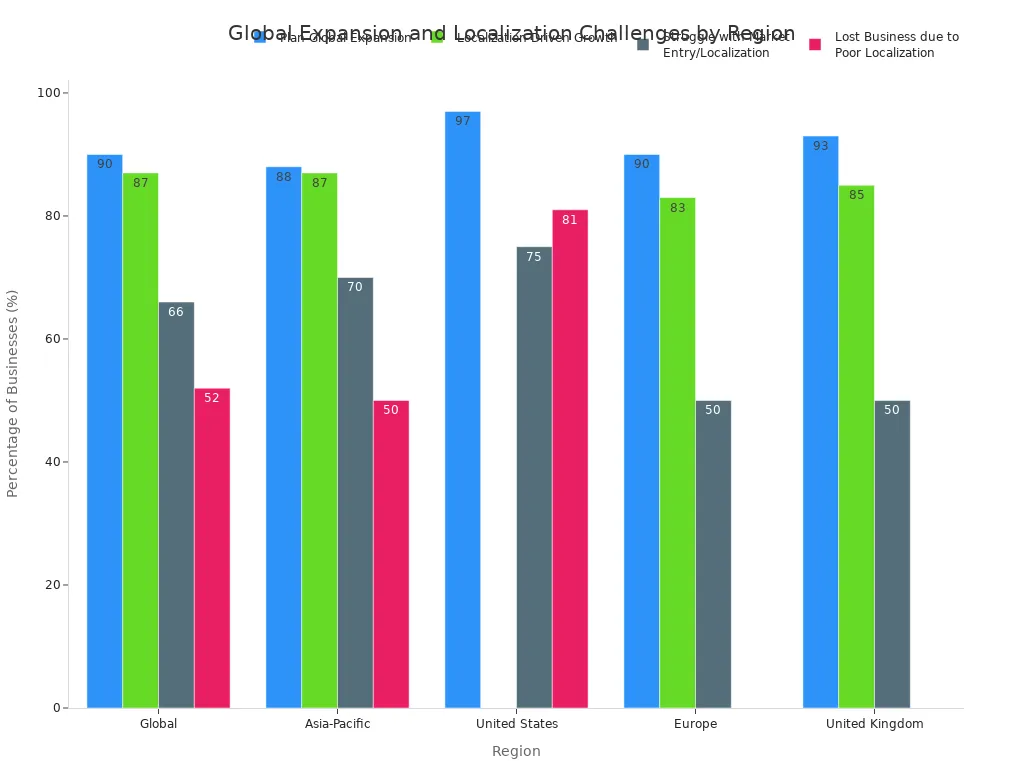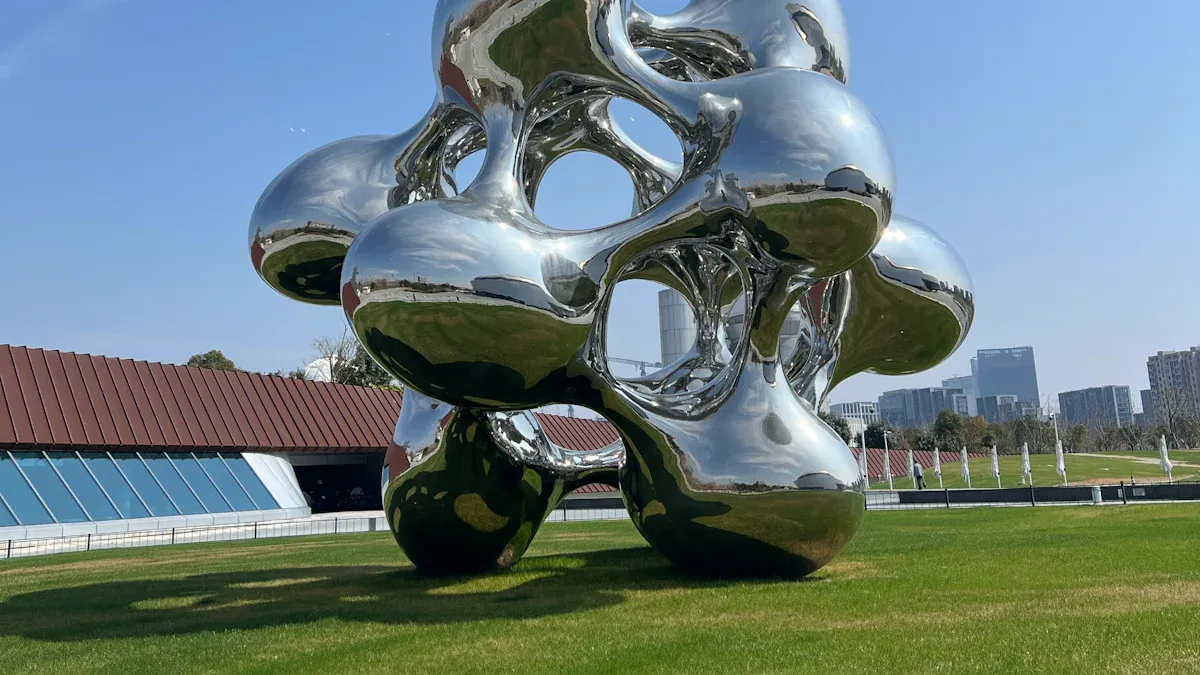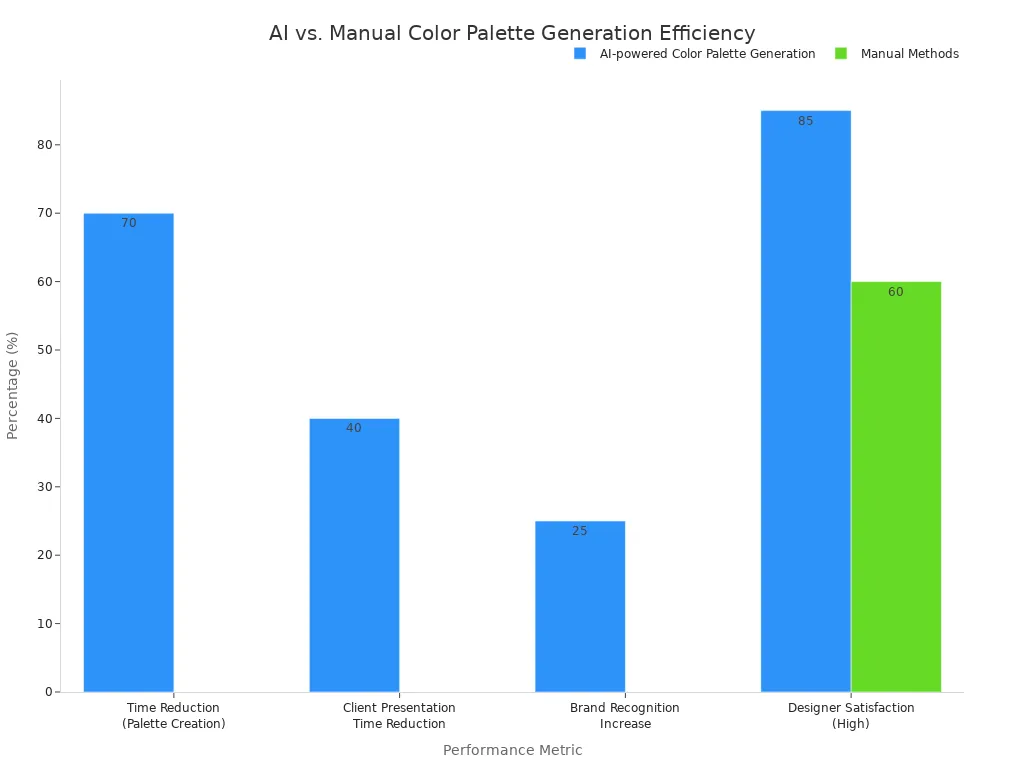
Generative models analyze vast cultural datasets to inform color palette generation. AI color palette generators move beyond generic tools, enabling a better visual design. This AI process creates a more effective visual design for global markets. A brand's approach to diversity and inclusion in its color and design choices is crucial.
A global study shows 75% of consumers say a brand's reputation for inclusion influences their purchase decisions. The AI color palette generators aid this color palette creation.
AI-powered tools and AI color palette generators address these market needs. The AI helps with color palette generation for a better visual design. The following data shows why this AI capability is vital for any brand planning to expand. The AI color palette generators use AI to create a unique color palette. This AI color palette generation creates a better palette. The AI helps with the color palette generation. The AI color helps the visual design.

This AI process helps create culturally relevant color palettes, a key part of modern visual design. This color and cultural connection is vital.
How Generative Models Learn Culture

Generative models develop a deep understanding of color by analyzing massive amounts of cultural data. This training enables ai color palette generators to move beyond basic color theory. The machine learning algorithms learn the subtle connections between color, emotion, and cultural context. This process is fundamental to creating a meaningful visual design.
Training on Cultural Datasets
The foundation of a culturally aware AI is its training data. The model processes millions of images and texts from diverse cultural sources. AI-powered tools use large, public datasets for this training. Machine learning algorithms analyze these collections to understand visual patterns. Key datasets include:
- WikiArt Emotions Dataset: This contains emotional reactions to paintings.
- MoMA Github Data: This catalogs artworks and exhibits from the Museum of Modern Art.
- Open Heritage 3D: This offers 3D models of global historical sites.
This extensive training helps the AI learn the visual language of different cultures. The machine learning algorithms in ai color palette generators use this knowledge for better color palette generation. This process improves the emotional impact of the final visual design.
Identifying Color Symbolism
An AI model identifies color symbolism by associating colors with concepts found in text and image metadata. This analysis helps the AI understand color psychology and its emotional impact. For example, machine learning algorithms learn that red can mean luck in China but unluckiness in Nigeria. The AI studies ideological representations and everyday scenarios to grasp these nuances. This knowledge of color theory and harmony is crucial for effective color palette generation. The ai color palette generators use this data for their color palette generation.
In Japan, the deep purple 'murasaki' was historically reserved for the elite, showing a connection between color and social status. AI can learn these historical links. The emotional impact of a color is tied to its cultural history.
The table below shows how a single color can have different meanings. Ai color palette generators use this information for color palette generation.
| Color | Culture/Context | Symbolism |
|---|---|---|
| Yellow | China | Royalty, Nourishing |
| Yellow | Egypt | Mourning |
| Green | Islam | Perfect faith |
| Purple | Thailand | Mourning (for widows) |
| White | China, Japan | Death, Mourning |
| Black | Thailand | Bad luck, Evil |
This understanding of color theory allows ai color palette generators to create a palette with the right emotional impact. The machine learning algorithms ensure the color palette generation has cultural harmony.
Generating Authentic Palettes
AI color palette generators create novel, authentic palettes instead of just copying existing ones. They use machine learning algorithms to synthesize new combinations based on learned patterns. The AI learns the rules of color harmony and visual design from the data. This allows the model to produce unique ai art and custom color palettes. Frameworks like GenColor follow a specific process for this color palette creation.
- Conceptual Instancing: The model generates diverse ai art images based on a concept (e.g., "Japanese tranquility").
- Text-guided Image Segmentation: The AI identifies the most important parts of the ai art images.
- Color Association: The model extracts dominant and accent colors to build a new palette.
This method ensures the final color palette generation is both original and culturally relevant. The ai color palette generators use machine learning algorithms to achieve this harmony. The resulting ai art reflects a deep understanding of color theory and color psychology. The ai color palette generators produce a palette with strong visual design. The machine learning algorithms in ai color palette generators are key to this color generation. The ai art shows excellent harmony. The ai art respects cultural context. The ai art has a powerful emotional impact. The color palette generation from ai color palette generators is a sophisticated process. The machine learning algorithms create harmony in the ai art. The color theory is applied correctly.
Applications of AI Color Palette Generators

The theoretical power of AI translates into practical tools that reshape industries. AI color palette generators offer tangible solutions for branding, user experience, and product development. These applications demonstrate how AI helps businesses connect with diverse audiences on a deeper visual level. The AI ensures the final visual design achieves perfect harmony.
Localizing Brand Identity
A strong brand identity must be consistent yet flexible. AI color palette generators help businesses adapt their visual identity for different regions without losing core branding principles. This process is vital for effective branding and marketing. The AI analyzes a company's existing branding guidelines. It then compares them with the color preferences and competitor schemes in a new market. This creates a localized visual identity that feels both familiar and culturally appropriate.
For example, a global brand can use ai color palette generators to adjust its primary color palette. The AI might suggest a brighter, more vibrant palette for a campaign in Latin America, reflecting local aesthetic preferences. This ensures the branding maintains its identity while building regional relevance. The AI-driven suggestions help the brand's visual identity resonate with new customers. This careful color palette generation strengthens the overall branding and its visual identity. The AI helps the branding achieve harmony with local tastes. The color palette generation process respects the brand's core identity.
Personalizing User Interfaces
Personalization is a key driver of user engagement. AI color palette generators can create dynamic user interfaces that adapt to individual user preferences. An application could use AI to adjust its theme based on a user's location or stated preferences, creating a more comfortable and engaging experience. This level of personalization makes users feel a stronger sense of ownership.
Early adopters of advanced personalization have seen customer satisfaction scores increase by up to 15%. SaaS platforms using adaptive UI projects have also noted an 8-12% rise in daily active users. This shows a direct link between custom color experiences and user loyalty.
AI-powered tools also improve accessibility and inclusivity. AI can predict how users with different visual abilities perceive color, ensuring the design is usable for everyone. The AI also navigates complex cultural color meanings to avoid misinterpretation. A study by Harris Interactive found that 62% of consumers are more likely to engage with a brand that reflects their cultural values. AI color palette generators make this possible by:
- Analyzing cultural color perception to create emotionally intelligent designs.
- Identifying culturally relevant color palettes based on data about user preferences.
- Helping designers understand deep cultural differences to tailor the visual design.
This AI-driven personalization respects user preferences and fosters a more inclusive digital environment. The color palette generation considers both aesthetics and cultural context, leading to a better visual design. The AI ensures the color choices have harmony with user expectations. This personalization strengthens the connection between the user and the product's identity.
Informing Product Design
Generative models are becoming invaluable in product design, from fashion to home decor. AI color palette generators can suggest innovative and culturally relevant colorways for new product lines. This helps designers make informed decisions that align with market trends and consumer preferences. The AI analyzes vast datasets to provide ai-driven suggestions for color palette generation.
In the fashion industry, companies use AI to forecast color trends. Generative models analyze social media, runway shows, and cultural events to generate a palette that will resonate with consumers. This process helps brands create clothing lines with the right color and harmony for the upcoming season. The AI can even produce sustainability-focused color palettes by analyzing trends in eco-conscious consumerism.
AI also transforms the design of cultural products. For instance, designers use AI to create authentic color schemes for tourism merchandise. The process often involves these steps:
- An AI model identifies target imagery based on tourist emotional needs.
- Another AI generates colored images reflecting that imagery.
- Key colors are extracted from the images.
- Color harmony calculations determine the best combinations for the final design.
A case study on a Harbor Seal tourism product showed how AI turned abstract emotional concepts into tangible color images for product design. This demonstrates how AI color palette generators can create custom color palettes that capture the essence of a cultural experience. The resulting color palette creation provides a strong foundation for a product's visual identity. This approach ensures the final visual design has both commercial appeal and cultural harmony. The color palette generation respects the identity of the source material.
Benefits and Challenges of This Approach
Generative models offer powerful new ways to approach color selection. However, designers must understand both the advantages and the potential pitfalls. Using ai color palette generators effectively means leveraging their strengths while actively managing their weaknesses. This balanced view is key to a successful visual design.
Benefit: Scale and Efficiency
One of the biggest benefits of using ai color palette generators is the massive gain in efficiency. The color palette generation process becomes much faster. Machine learning algorithms can analyze millions of data points in seconds. This speed allows design teams to explore more options in less time. The AI handles the heavy lifting of initial research and ideation.
This efficiency translates directly into business value. AI-powered tools reduce project timelines and free up designers to focus on higher-level strategic thinking. The AI provides a strong starting point for any color palette creation. The following data highlights the significant performance improvements.

As the chart shows, ai color palette generators can cut the time for color palette generation by up to 70%. This acceleration allows for quicker client presentations. The AI also helps increase brand recognition over time. The improved workflow leads to higher satisfaction among designers. The AI makes the entire visual design process more streamlined.
Benefit: Authenticity and Nuance
AI color palette generators go beyond basic color theory. They capture subtle nuances that traditional tools often miss. The machine learning algorithms learn color relationships from vast datasets of art, photography, and film. This training helps the AI understand color in a more human-like, conceptual way. The result is a more authentic and emotionally resonant visual design.
These models can achieve a level of detail that mimics professional colorists. They understand how light, shadow, and reflection affect a color. This allows the AI to produce a palette with sophisticated color grading.
- AI models interpret color conceptually, not just by its RGB code.
- The machine learning algorithms analyze how light interacts with surfaces.
- The AI can even detect subtle undertones in skin that the human eye might miss.
This deep understanding of color theory allows ai color palette generators to create a unique palette. The color palette generation process considers context and emotion. The AI produces a final color selection that feels deliberate and meaningful. This nuanced approach to color is a major advantage for creating a powerful visual design. The machine learning algorithms in ai color palette generators are essential for this advanced color palette generation.
Challenge: Risk of Stereotyping
A significant challenge with using AI is the risk of reinforcing cultural stereotypes. Machine learning algorithms learn from existing data. If that data contains biases, the AI will learn and reproduce them. An AI might associate certain colors with a culture in a simplistic or outdated way. This can lead to a visual design that feels inauthentic or even offensive.
For example, an AI trained on limited data might overuse red for all Chinese-themed designs, ignoring the rich diversity of color in Chinese culture.
Designers must actively work to mitigate this risk. There are several strategies to make the color palette generation process more inclusive. These interventions happen at different stages of the AI workflow.
- Data-Level Interventions: This involves curating the training data. Teams can filter out harmful representations and add new data to create a more balanced view.
- Model-Level Mitigations: This adjusts how the model learns. Developers can use techniques that penalize the AI for making biased associations.
- Post-Processing Techniques: This involves filtering the AI's output. Systems can block or rephrase results that contain stereotypes.
Using these methods helps ensure the ai color palette generators produce a more respectful and accurate color palette. The AI can then support a truly inclusive color palette generation. This careful management is crucial for ethical design. The AI must be guided to avoid simplistic color associations.
Challenge: Need for Human Curation
AI is a powerful tool, but it is not a replacement for human judgment. The machine learning algorithms in ai color palette generators lack empathy and a moral code. The AI cannot understand the deep ethical implications of its color choices. This is why human curation is an essential part of the process. Designers are ultimately responsible for the final output.
As design expert Jakob Nielsen states, "Building the right product remains a human responsibility." The AI can handle implementation, but humans must guide the vision.
A successful workflow involves collaboration between the designer and the AI. The human provides the creative direction, and the AI provides the raw material. This partnership ensures the final color palette generation aligns with strategic goals. A typical collaborative process looks like this:
- Start with a clear creative brief: The human designer defines the project's tone, audience, and goals.
- Let AI explore first drafts: The AI analyzes data and suggests initial color concepts.
- Curate and adapt: The designer reviews the AI's suggestions, selecting the best options.
- Use AI for production speed: The AI can quickly generate variations of the chosen palette.
- Finish with a human touch: The designer conducts a final review for cultural sensitivity and brand alignment.
This process leverages the strengths of both the human and the AI. The designer's role evolves from a creator to a curator. They ensure the ai color palette generators are used responsibly. This human oversight is vital for creating a color palette that is not only beautiful but also culturally appropriate. The final color choices reflect human insight. The machine learning algorithms support, but do not lead, the design. The ai color palette generators become a partner in the color palette generation.
Generative models are transformative ai-powered tools. The ai color palette generators enable respectful cultural color palette generation. This ai process helps create an effective visual design. The ai color palette generators use ai for better color palette generation. The ai color palette generators use ai for better color palette generation. The future promises a synergy between human designers and ai color palette generators. Designers will guide the ai, ensuring the color palette creation is ethical. This partnership fosters a more inclusive visual design. The ai color palette generators and ai help the color palette generation. The ai color palette generators and ai help the color palette generation. The ai color palette generators and ai help the color palette generation. The ai color palette generators and ai help the color palette generation. The ai color palette generators and ai help the color palette generation. This color palette and color design create a better visual design and visual design. The color and color palette have a better visual design. The color has a better color. The color has a better color. The color has a better color. The color has a better color.
FAQ
How do AI color palette generators work?
AI color palette generators use AI to study images and text. The AI learns how different cultures use color. This knowledge helps the AI create a better visual design. The AI suggests a color palette for a specific visual design. This process improves the final visual design.
Can AI replace human designers?
No, AI does not replace human designers. The AI is a powerful tool for visual design. Designers use the AI to explore ideas quickly. The human designer makes the final creative decisions for the visual design. This ensures a thoughtful final design.
What makes an AI-generated color palette authentic?
AI color palette generators analyze vast cultural data. The AI understands the deep meaning behind a color. This allows the AI to create a palette that respects a culture's identity. The AI creates a visual design with cultural harmony. This process strengthens a brand's identity.
How does AI handle different user preferences?
AI color palette generators can adapt a visual design to user preferences. The AI analyzes data about user preferences for color. It then adjusts the visual design based on these preferences. This AI process creates a custom color experience for each user, respecting their preferences.
See Also
Forecasting Fashion's Future: Predictive Models Shaping Retail by 2025
Achieving Equilibrium: Predictive Analytics Harmonizes Fashion Supply and Consumer Demand
Unlocking Success: Machine Learning Predicts Fashion Trends and Elevates Sales
Mastering Momentum: How AI Manages Viral Trends in Fast Fashion
Precision Planning: Data-Driven Demand Sensing for Exclusive Fashion Drop Models